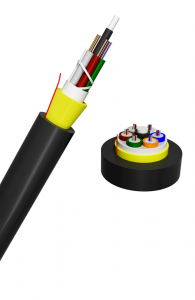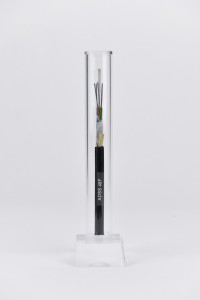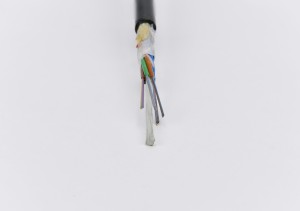Demystifying All-Dielectric ADSS Fiber Optic Cable Solutions Shaping Communications
As exponential global data demand relentlessly outpaces conventional connectivity capacities, purpose-engineered All Dielectric Self Supporting (ADSS) fiber optic cabling solutions continue securely transmitting vast defense communications encryptions, providing extreme weather-resilient broadband networking capabilities traversing extensive rural regions and simplifying fast scalable 5G infrastructure rollout across densely populated metropolitan zones using unified St Adapters Sm Mm ADSS cable architectures. We comprehensively explore ADSS fiber optic cable single model technical composition, manufacturing optimization, diverse defense, civilian application scenarios, aerial installation methodologies, and projected performance capabilities sustaining next-generation global information conduit upgrades matching future bandwidth scaling necessities.

ADSS Fiber Optic Cable Design and Production Innovations
Unlike traditional fiber optic cable messenger designs depending wholly on incorporated steel or metal alloy strain cables providing pole-to-pole structural supports when routing aerially, purposefully engineered ADSS hybrid fiber optic technology uniquely utilizes premium durable glass-reinforced plastic composite central strength member rods, proving indispensable structurally sustaining entire continuous fiber connectivity integrals alone without underlying guy-wires necessary reinforcing conventional optics ground wire (OPGW) variants comparative limitations needing supplemental strength members architectures. This strategic "all-dielectric" solid composite rod design integration maximizes extreme weather resilience, specifically targeting optimally secure and extended reach aerial fiber optic installations across hundreds of suspended miles cabling routes by:

● Maximizing sturdy strength member tolerance precision during high-speed manufacturing factory processes, enabling over twice rate production yields matching rising ADSS fiber optic global demand currently.
● Determining doubled or quadrupled fiber optic subunit counts compared to traditional alternatives better fulfilling modern dense wavelength-division multiplexing DWDM encryption bandwidth requirements along the fastest expanding fiber infrastructure zones transmitting security-centric defense communications traffic.
● Encapsulating sensitive optic fiber pathways within thicker ultraviolet-resistant polyethylene coatings, creating enhanced environmental abrasion protections, including vegetative or wind-borne foreign objects protections once aerially deployed, significantly bolstering signal stability and minimizing disruptive attenuation over projected multi-decade aerially exposed ADSS fiber applications lifecycles proven in-field.
● Optional bolstered FRP armoring protections bring further mechanical reinforcements guarding against potential rodent damages across certain geographical regional infrastructure overlays historically prone to encountering such threats - without undermining integrated dielectric weather resilience advantages differentiating such fiber optic capacities.
ADSS Diverse Application Scenarios Targeting Growth Sectors
The holistic blended advantages inherent within aerially suspended superior dielectric strength member ADSS fiber optic cable structural architecture make this global communications technology uniquely ideally suited to targeting large-scale digital connectivity spanning requirements across:

● Exponentially rising international aerospace and defense communications encryptions demand transmitting highly secure, electromagnetically impenetrable, and jam-resistant high-bandwidth fiber optics networking unmatched capacities resilience versus radio wave or copper alternative wireless limitations - especially across vast heavily surveilled border perimeter monitoring installations concealments easily camouflaged given ADSS ultra lightweight compact flexibility advantages.
● Expanding long-range onshore/offshore energy installations real-time monitoring and emergency response communications security camera or sensors telemetries capabilities - proving indispensable through immense optic fiber innate immunity from dangerously conducted electrical faults or short circuit events that would cripple analogous copper communications cabling permanent damages threats jeopardizing uninterrupted SCADA systems control centers patient wellbeing monitoring dependabilities detecting pipeline damages, electricity grid instabilities from frequent storms or offshore drilling platform troubles requiring microsecond response contingencies preparedness systems intact functioning without fail.
● Expedited disaster recovery emergency network restoration & rerouting rollout demands, especially across regions frequently battered by seasonal Pacific Typhoon super-storm weather events each year - superseding vulnerable above ground copper wiring telecommunications infrastructures previously wiped out entirely through such extreme climate episodes leaving typhoon-affected populations trapped 'offline' for months until extensive rebuilding mobilizations complete.
● Next generation extended rural countryside broadband internet communications modernization coverage ambitions economically expanding affordable high-speed fiber optic networking connectivity bridging very remotest mile communities cost-effectively finally - successfully bypassing traditionally challenging ultra-remote agricultural range inherent limitations where only satellite relay or point-to-point microwave tower solutions remained feasible historically falling behind urban modernization but no longer such advancements change dynamics monumentally.
Effective ADSS Cable Infrastructure Field Installation Best Practices
With exponential global optical fiber connectivity growth trajectories forecast, adequately trained localized ADSS fiber optic cable installation teams prove essential executing precision end-to-end infrastructure buildouts optimizing lasting network performance merits transmitting future bandwidth capacities matching demands projected:
● Structural Utility Poles Anchoring - Advance teams perform comprehensive existing structural assets analysis, determining optimal pole anchoring selection points across the planned aerial cable grid ahead of arrivals. Reinforce questionable assets discovered beforehand, avoiding unnecessary field delays later. Teams apply weatherized stainless pole banding hardware attachments, consistently meeting anticipated max weight/wind shear fiber load specifications.
● Motorized Fiber Optics Dispensing -Utilize tag-team footings when adequately preconditioning multiple extended bulk cable reels mounted onto reel jacks before controlled unraveling, avoiding unnecessary binding, kinks, or twisting damages throughout the entire unfurling phase. Second, operators monitor dispensing rates judged against pull speeds, confirming always-on-target payouts tension - critical to avoiding sudden acceleration strains exceeding Kevlar ripstop limits.
● Mid-Span Aerial Support Slack Management - Employ evenly spaced mid-span aerial pole attachment hardware redirecting ADSS cable dynamic weight distributions, maintaining regulated vertical safety clearance minimums to grounds required by code. Overhead fiber slack loops soon invite troubles interfering with final tension integrity, risking derailments; hence, managed tautness improves lasting aeration. Suspended hardware assists in redirecting momentums when gusting wind shears shift kinetically.
● Cable Termination Splice Enclosures - Once destination endpoint terminals are secured tightly, field splicer specialists measure, splice, and inject compressed moisture-displacement air drying agent into exposed fiber optic strands using hardy IP68-rated stainless splice enclosures consistently preventing post-construction waterproof threats that risk conductivity oxidation degrading client signal stability ridiculously fast otherwise left unprotected long-term major metropolitan builds alike.
By conscientiously adhering to such proven end-to-end aerial ADSS fiber optic construction best practices checklist above, regional or national telecommunications contractors enjoy lasting ADSS cable performance merits transmitting blazingly fast DWDM multi-channel encryption wavelengths matching exponential bandwidth demands protecting security interests, energy sectors stability, and rural countryside equality milestones for decades through consultative quality craftsmanship principles separating shortlived projects from exemplarily future-forward networks built optimizing tomorrow's interconnected data transmission needs realized today.

 0755-23179541
0755-23179541  sales@oyii.net
sales@oyii.net